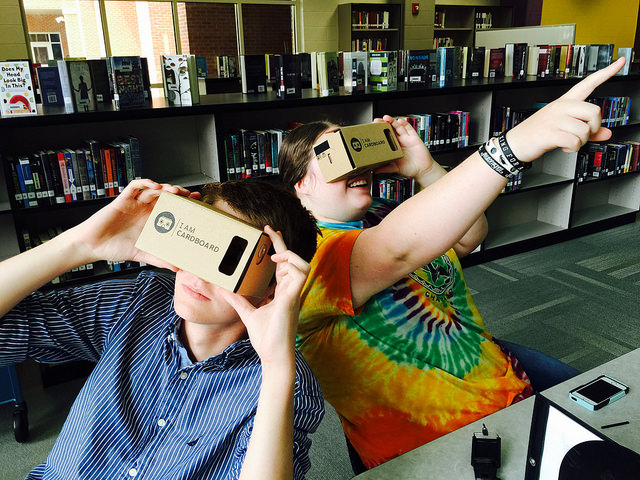Review of a website by Tech Learning on what students think about Google Expeditions.
Tech Learning (2016) What students think about Google Expeditions. Available at: http://www.techlearning.com/resources/0003/what-students-think-about-google-expeditions/69828 (Accessed: 10 April 2017).
The Tech Learning website that is going to be reviewed sets out with the aim of providing insights of how technology could be implemented to have a positive effect on education. This review will focus on the webpage titled “What students think about Google Expeditions”, a page that holds great potential for advancing our knowledge concerning the implications of VR and Google Expeditions in the classroom. This review will discuss the value of the evidence that the website provides, how the article fits with wider literature and whether this article suggests ways in which VR can be implemented within classrooms.
This webpage can be critiqued in the way that it does not provide an awareness of wider literature related to the topic of VR. This is a particular weakness of this website when compared to other works on VR as the reader is not provided with background information to build an opinion on, which is included in articles such as Pantelidis (2009) and Fengfeng and Tami (2013, p.442). Therefore, this website assumes that the reader already has a basic knowledge of what VR and Google Expeditions are. Consequently, providing no definitions or examples to engage the reader which was a strength of the articles produced by Piovesan et al (2012) and Smedley and Higgins (2005). Subsequently, unless the reader has previously encountered VR and Google expeditions, when reading this webpage, they are at an immediate disadvantage to others.
One of the strengths of this webpage is the way in which it is solely focused on providing readers with reviews from teachers and students who have used Google Expeditions. This is particularly useful to our study as it provides clear pieces of evidence directly from a classroom that are useful when assessing the effectivity of VR. This is arguably better than Pantelidis’ (2009, p.62) article in terms of avoiding bias as each advantage to VR is matched with a disadvantage, something that Pantelidis (2009, p.64) failed to do with their small disadvantages section. There is however a disadvantage to this website as one could argue that its sole content is merely the opinions of students and teachers, rather than facts which is demonstrated in such articles as McComas et al (1998, p.2) and Freina et al (2016, p.102). However, the evidence provided on this webpage is valid as it can be used in our study as demonstrations of practical applications of VR. Additionally, due to this page being formed of opinions, it does not discuss any theoretical frameworks, such as constructivism, which other articles such as Thorsteinsson and Page (2007, p.4) discuss in detail. A link to theoretical frameworks would potentially reinforce the opinions provided in the webpage and crucially add to their validity.

This webpage can be further critiqued as it does not suggest ways in which VR could be successfully implemented in educational environments, which Pantelidis (2009, p.64) successfully incorporated in their article in both detailed writing and model diagrams. Arguably, the only form of an insight in how to implement VR in a classroom is provided by the photo included on the webpage, which presents a classroom of students using Google cardboard. This however does not provide the reader with any in-depth knowledge and is merely an aesthetic feature on the webpage. This webpage also lacks a literature review, which therefore could act as a potential barrier for fitting in with wider literature. However, the webpage, through the evidence that it displays, does fit with wider literature as many of the points raised match those of other articles, for example the prospect of greater student attention (Kandalaft et al, 2013, p.35; Roussou, 2001, p.2 and Martin-Gutierrez, 2017, p.5). This means that the responsibility of finding relevance of this webpage to other pieces of work is placed on the reader due to the lack of literature review, ultimately for this piece to hold value it should be included alongside other articles rather than alone.
Overall, this article has advanced our knowledge involving VR in education, especially in regards to the positive and negative aspects of Google Expeditions in classrooms. The evidence provided, though merely opinions, are of great use as they can be supported and reinforced by factual evidence from other authors to produce a robust argument for the use of VR. It could however be argued that this webpage lacks a lot of significant features that would allow it to contribute more to knowledge gain related to VR and Google expeditions. Thus, this piece arguably holds greater relevance to our study than to the wider field of VR research as our study would make use of it as an accompaniment to other articles which would support the opinions that are included with valid statistical data.
